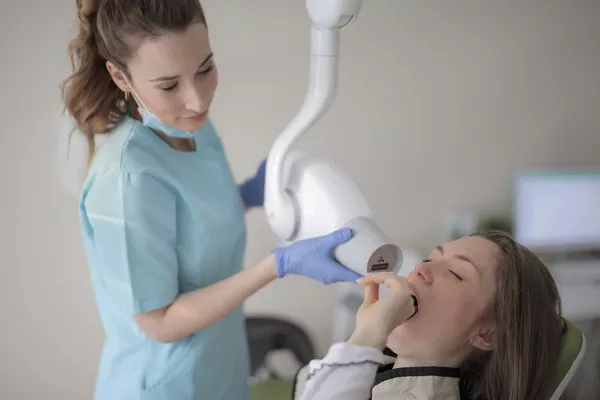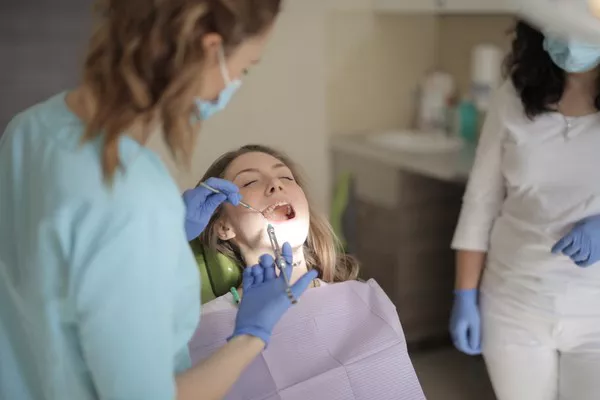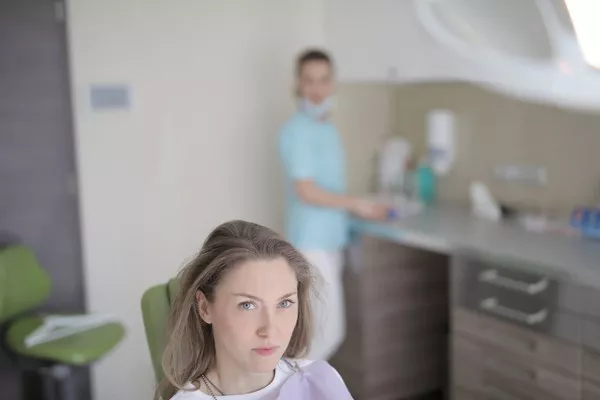Teeth whitening has become a popular cosmetic dental procedure, with various methods and technologies available to achieve a brighter smile. One such method that has gained attention is UV teeth whitening. This article aims to provide a comprehensive understanding of UV light in teeth whitening treatments. We will explore the science behind UV light’s role in tooth whitening, discuss its effectiveness compared to other techniques, consider safety concerns, and provide insights into professional UV teeth whitening procedures.
The Science Behind UV Light and Tooth Whitening
UV light refers to ultraviolet radiation, which falls outside the visible light spectrum. In teeth whitening, UV light is often used as a supplemental component to enhance the bleaching process. Here’s how it works:
Activation of Peroxide:
Most teeth whitening treatments involve the use of peroxide-based bleaching agents, such as hydrogen peroxide or carbamide peroxide. These agents break down stains and discoloration by releasing oxygen radicals. UV light acts as an accelerator or catalyst, promoting the release of these radicals and speeding up the chemical reactions involved in the whitening process.
Photocatalysis:
UV light activates titanium dioxide nanoparticles present in some whitening gels or materials. When exposed to UV light, these nanoparticles produce reactive oxygen species, which augment the breakdown of pigmented molecules responsible for tooth staining.
Diffusion of Light:
UV light has shorter wavelengths compared to visible light. It can penetrate the tooth structure more deeply, reaching deeper layers where stains and discoloration reside. This deeper penetration allows UV light to target and break down chromophores, resulting in a more thorough whitening effect.
While UV light can enhance the whitening process, it is important to note that it is not the sole factor responsible for the effectiveness of teeth whitening treatments.
Effectiveness of UV Light in Teeth Whitening
The effectiveness of UV light in teeth whitening can vary depending on several factors, including the specific treatment method and the condition of the teeth being treated. Here’s a closer look at its efficacy:
Accelerated Whitening:
UV light can accelerate the chemical reactions involved in the whitening process, potentially reducing the overall treatment time. When used in conjunction with peroxide-based bleaching agents, UV light can enhance the release of oxygen radicals, leading to faster and more significant whitening results.
Deeper Stain Removal:
The ability of UV light to penetrate deeper into the tooth structure allows it to target and break down stubborn stains that may not be accessible with other whitening methods alone. This deeper penetration can result in a more comprehensive whitening effect.
Combination Treatments:
UV light is often used in combination with other whitening techniques such as in-office professional treatments or take-home tray-based systems. These comprehensive approaches utilize UV light as an adjunct to maximize the whitening potential of the primary method, resulting in enhanced overall results.
It’s important to note that UV light itself does not possess inherent whitening properties. Its effectiveness lies in its ability to enhance the action of whitening agents or technologies already present in the treatment.
Safety Concerns Surrounding UV Teeth Whitening
While UV teeth whitening can be effective, safety concerns should be considered before undergoing such treatments. Here are some key points to keep in mind:
Potential Tooth Sensitivity:
UV light-activated whitening treatments may increase the risk of tooth sensitivity during and after the procedure. The combination of UV light and bleaching agents can potentially cause temporary sensitivity in some individuals. It is crucial to discuss any pre-existing tooth sensitivity concerns with a dental professional before opting for UV teeth whitening.
Risk of Tissue Irritation:
Direct exposure to UV light can potentially cause tissue irritation, particularly to the gums and oral soft tissues. Protective measures such as the use of barrier materials or proper isolation techniques should be employed during UV teeth whitening procedures to minimize the risk of tissue damage.
Eye Protection:
UV light is harmful to the eyes and can cause damage if proper eye protection is not used during the treatment. Both the patient and the dental professional must wear appropriate protective eyewear to safeguard against potential eye injuries.
Professional Supervision:
UV teeth whitening treatments are best performed under the supervision of a dental professional who can assess the individual’s oral health, determine the suitability of the treatment, and ensure proper application and safety protocols are followed.
How long does it take to whiten teeth with UV light?
The duration of teeth whitening with UV light can vary depending on several factors, including the specific treatment method, the severity of tooth discoloration, and individual variations in response to whitening. It’s important to note that UV light itself does not whiten teeth; it acts as an accelerator or catalyst to enhance the effects of whitening agents. Here are some general guidelines regarding the timeframes involved:
In-Office UV Teeth Whitening:
Professional in-office UV teeth whitening treatments typically involve a single session at the dental office. The duration of the session can range from 30 minutes to about an hour. During this time, the whitening gel or solution containing a peroxide-based bleaching agent is applied to the teeth, and UV light is used to activate the whitening process. The total treatment time may also include preparation and post-treatment steps, such as cleaning the teeth and applying protective coatings.
Take-Home UV Teeth Whitening Kits:
Some dental professionals may provide take-home UV teeth whitening kits for their patients. These kits typically include custom-fitted trays and a whitening gel with instructions for home use. The treatment duration for take-home kits can vary, but it generally involves wearing the trays with the whitening gel for a prescribed period each day over a span of several weeks. This can range from a few days to a few weeks, depending on the desired level of whitening and the concentration of the whitening gel. The UV light included in these kits is usually a small LED light that attaches to the tray and helps activate the gel during the treatment.
It’s essential to follow the instructions provided by your dental professional when using UV teeth whitening kits at home to ensure safe and effective results. They will guide you on the recommended treatment duration and frequency based on your specific needs.
Overall, while some individuals may notice improvement after a single in-office treatment, achieving the desired level of teeth whitening usually requires multiple sessions or continuous use of take-home kits over a period of several weeks. It’s important to understand that the speed of teeth whitening results can vary significantly among individuals due to factors such as the severity of staining, intrinsic tooth color, and individual variations in response to whitening treatments.
To determine the most suitable treatment duration for your specific case, it’s recommended to consult with a dental professional who can assess your oral health, evaluate the extent of discoloration, and provide personalized recommendations based on your goals and expectations.
Related Topics:



























